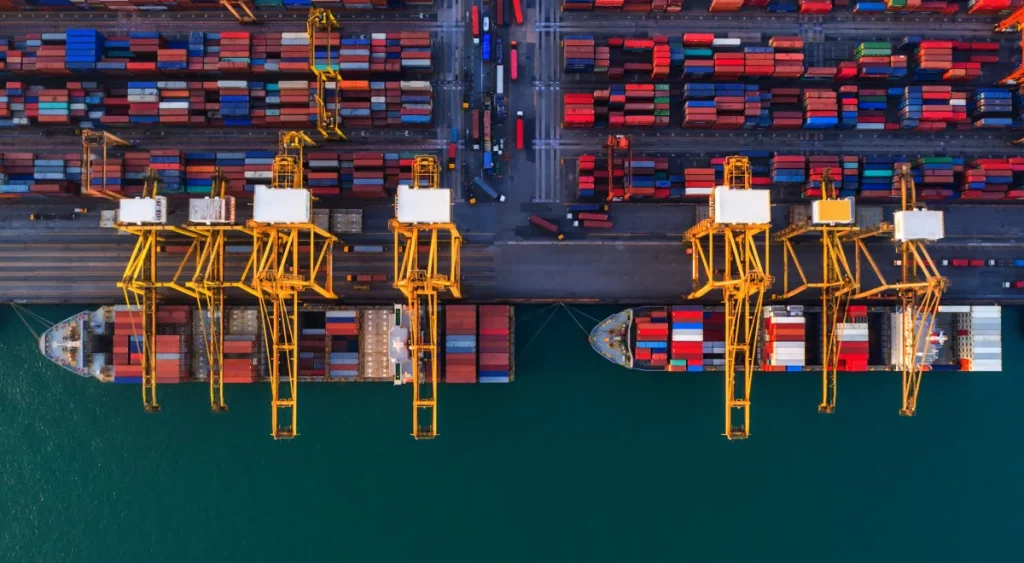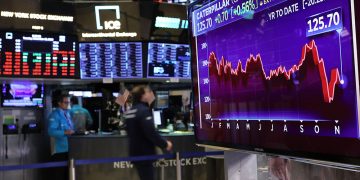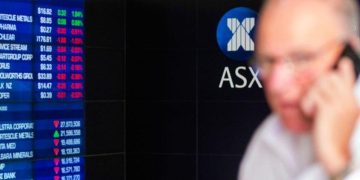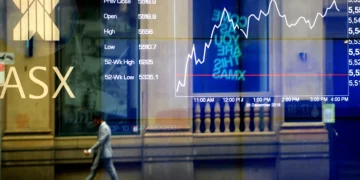In the third quarter of 2024, an unexpected signal emerged from global payment networks. Automatic Identification System (AIS) data, which tracks transactional flow across major cross-border payment infrastructures, showed a notable 10% decline in the frequency of international fund movements. This drop, seemingly modest on the surface, points toward deeper strains in global liquidity—a critical lifeline for international trade and finance. Why did this decline happen, and what risks does it expose to the interconnected web of global markets? As capital flows slow, emerging markets face amplified outflows, and European banks grapple with increasing payment delays. This article explores the evolving liquidity landscape revealed by AIS data and its broader implications for global financial stability.
Key Data and Background
AIS data serves as a unique real-time proxy for monitoring the pace and volume of cross-border financial transactions. In Q3 2024, aggregated data from the world’s largest payment networks—including SWIFT, CHIPS, and RTGS systems—showed a 10% reduction in the frequency of cross-border payment initiations compared to the previous quarter. This metric captures not only trade-related payments but also capital transfers, interbank settlements, and corporate remittances.
The timing coincides with a period of tightening monetary policies in major economies, geopolitical uncertainties, and lingering post-pandemic supply chain adjustments. Reduced payment activity signals a drop in liquidity circulation across borders, potentially reflecting heightened risk aversion or operational bottlenecks.
(See Figure 1: Cross-Border Payment Frequency via AIS Data, Q2 vs. Q3 2024)
This liquidity tightening impacts the global banking system’s backbone. For example, European interbank payment delays—measured by time lags in payment clearing systems—increased by 15% in the same period, pointing to emerging operational pressures. Simultaneously, emerging markets suffered accelerated capital outflows as investors sought safer assets amid uncertainty, intensifying funding stresses in countries reliant on foreign inflows.
(See Figure 2: European Interbank Payment Delay Index, Q3 2024)
Cross-Market Impact
The AIS data’s implications resonate across at least two vital market segments. First, emerging market economies experienced capital flight exacerbated by declining cross-border payment frequency. Reduced liquidity flow hampers local banks’ ability to intermediate foreign capital efficiently, inflating borrowing costs and increasing currency volatility. Countries like Turkey, South Africa, and Brazil faced sharp currency depreciation pressures alongside widening bond yield spreads.
Second, European banking infrastructure showed signs of strain. Payment delays in cross-border settlements undermine confidence and increase counterparty risk, potentially leading to tighter credit conditions. This phenomenon recalls aspects of the 2013 “taper tantrum,” when sudden liquidity withdrawal triggered market disruptions. However, unlike 2013’s primarily policy-driven shock, the 2024 data points to structural frictions within payment systems, possibly linked to technology transitions or regulatory adjustments.

(See Figure 3: Emerging Market Capital Flows and Currency Volatility, Q3 2024)
Historical parallels help frame the situation. In 2008, during the global financial crisis, a collapse in cross-border payment flows amplified credit shortages and financial stress worldwide. While the current decline is less severe, the gradual reduction in liquidity circulation could presage similar vulnerabilities if unresolved. Notably, the move towards faster payment technologies and real-time settlement protocols introduces both efficiency gains and new operational risks, requiring vigilant oversight.
Expert Views: Divergent Interpretations
The interpretation of this AIS data divergence generates debate among experts. According to the latest SWIFT report, the observed fluctuations largely result from temporary disruptions caused by ongoing technology upgrades and migration to next-generation payment platforms. SWIFT analysts argue that such short-term volatility is a natural consequence of complex system overhauls and should not be confused with systemic liquidity deterioration.
Conversely, fintech observers and some financial market analysts warn that the data reveals underappreciated systemic risks. They highlight that the persistent reduction in cross-border payment frequency, coupled with emerging market capital flight and increased payment delays, may reflect deeper liquidity shortages and fragile interconnectedness. Some argue these trends could presage contagion risks if a key node in the payment ecosystem experiences failure or cyber-attack.
Major financial institutions including Goldman Sachs and Morgan Stanley have acknowledged the growing importance of alternative data like AIS for real-time liquidity risk monitoring. Their internal research suggests the need for enhanced stress testing frameworks that incorporate cross-border payment dynamics beyond traditional balance sheet analysis. Meanwhile, the IMF calls for greater transparency and coordination among global regulators to address vulnerabilities in international payment infrastructures.
Adding complexity, some economists challenge traditional liquidity paradigms by emphasizing behavioral factors amplified by digital platforms and geopolitical tensions. Nobel laureates in finance point to the possibility that market participants’ reactions to perceived liquidity squeezes may trigger self-fulfilling crises, complicating predictive models.
Future Outlook and Strategies
Looking ahead to 2025, several scenarios emerge. In an optimistic outlook, technology upgrades conclude smoothly, restoring and potentially increasing cross-border payment velocity. Enhanced transparency and regulatory cooperation reduce operational risks, enabling emerging markets to regain investor confidence. In this scenario, AIS data might soon reflect recovering liquidity and improved global financial integration.
A more cautious or neutral scenario envisions persistent, though manageable, volatility. Structural challenges in payment systems continue to cause intermittent delays and uneven liquidity distribution. Investors and banks adapt by employing advanced data analytics and diversification strategies to mitigate risks. Monitoring three key indicators—AIS payment frequency, emerging market capital flows, and European interbank settlement delays—can guide proactive risk management.
The pessimistic scenario warns of deepening liquidity shortages exacerbated by geopolitical tensions, cyber vulnerabilities, or regulatory fragmentation. In such an environment, cross-border payment disruptions could cascade into broader financial instability, reminiscent of past crises but amplified by modern interconnectedness. Investors would need heightened vigilance, focusing on liquidity buffers, hedging strategies, and stress testing.
Conclusion
The 10% decline in global cross-border payment frequency revealed by 2024 Q3 AIS data spotlights emerging liquidity risks in an increasingly complex financial ecosystem. While some experts attribute this trend to technical upgrades and transient effects, others warn of underrecognized systemic vulnerabilities. The resulting capital outflows from emerging markets and rising European payment delays underline the tangible impact of liquidity strains.
How will global regulators and market participants balance innovation with stability to safeguard cross-border liquidity in 2025 and beyond? This question demands continued scrutiny as digital transformations reshape the foundation of international finance.





































